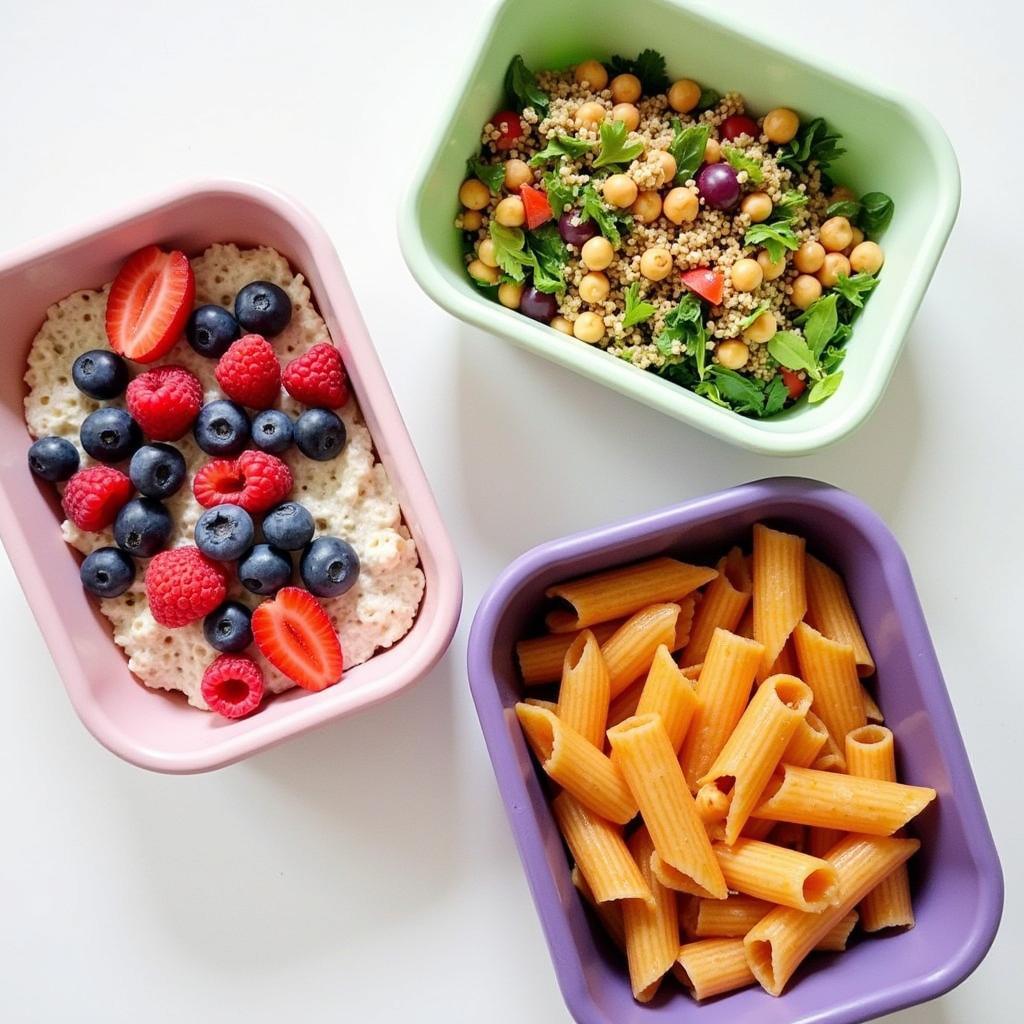Embarking on a thrilling outdoor escapade? Whether you’re conquering challenging trails or immersing yourself in nature’s embrace, having access to Fresh Trek Foods can make all the difference. Packing nutritious and delicious meals will keep your energy levels soaring and enhance your overall experience. Let’s delve into the world of fresh trek foods and discover how to elevate your next adventure.
Planning Your Fresh Trek Food Menu
The success of your culinary journey starts with meticulous planning. Consider these key factors when crafting your fresh trek food menu:
- Trip Duration: A weekend getaway calls for a different approach than a week-long trek. Shorter trips allow for more perishable options.
- Activity Level: Strenuous hikes demand calorie-dense meals, while leisurely walks offer more flexibility.
- Dietary Needs and Preferences: Cater to allergies, intolerances, and taste preferences for a truly enjoyable experience.
- Weight and Packability: Prioritize lightweight and compact foods to minimize strain on your backpack.
Essential Ingredients for Fresh Trek Foods
Creating delicious and nutritious meals on the go is easier than you think. These essential ingredients form the foundation of a successful fresh trek food menu:
- Fruits and Vegetables: Apples, oranges, carrots, and bell peppers offer a burst of vitamins and natural sweetness.
- Whole Grains: Quinoa, rice, and wraps provide sustained energy and can be used in various dishes.
- Protein Sources: Hard-boiled eggs, jerky, canned tuna, and nuts are excellent sources of protein to keep you feeling full and satisfied.
- Healthy Fats: Avocado, nuts, and seeds offer healthy fats that provide long-lasting energy and enhance flavor.
 Fresh Trek Food Ingredients
Fresh Trek Food Ingredients
Creating Flavorful and Easy Trek Meals
Forget bland and boring trail meals! These creative and easy recipes will tantalize your taste buds:
Breakfast:
- Overnight Oats: Combine rolled oats, chia seeds, your choice of milk, and a touch of honey in a reusable container. Let it sit overnight for a hearty and satisfying breakfast.
- Bagel with Nut Butter and Banana: A classic combination that provides carbohydrates, protein, and healthy fats for sustained energy.
Lunch:
- Wraps: Use whole-wheat tortillas to create customizable wraps filled with your favorite protein, veggies, and spreads.
- Salads: Pack a jar with layers of quinoa, chickpeas, chopped vegetables, and a light vinaigrette for a refreshing and nutrient-rich lunch.
Dinner:
- One-Pot Pasta: Combine cooked pasta, a jar of your favorite sauce, and pre-cooked protein for a warm and comforting meal.
- Instant Soup: Choose from a variety of flavorful instant soup options for a quick and easy dinner on the go.
 Trek Meal Ideas
Trek Meal Ideas
Tips for Keeping Food Fresh on the Trail
Preserving the freshness of your food is crucial for a safe and enjoyable trek. Follow these tips to keep your meals delicious:
- Invest in a Quality Cooler: A high-performance cooler will keep your perishable ingredients at a safe temperature for an extended period.
- Use Reusable Containers: Opt for airtight, leak-proof containers to prevent spills and maintain freshness.
- Pack Food in Order of Consumption: Place the items you’ll eat first at the top of your cooler for easy access.
- Consider Freezing Certain Items: Freeze items like meat, yogurt pouches, and pre-made meals to help keep other items cool and extend their shelf life.
Leave No Trace: Responsible Food Disposal
As responsible adventurers, it’s crucial to minimize our impact on the environment. Follow these Leave No Trace principles for food disposal:
- Pack It In, Pack It Out: Carry all food scraps, packaging, and trash with you.
- Use Reusable Bags and Containers: Minimize waste by choosing reusable options whenever possible.
- Dispose of Wastewater Properly: Filter gray water (from washing dishes) at least 200 feet away from water sources.
Conclusion
Fueling your adventure with fresh trek foods is easier than you think! With a little planning and preparation, you can enjoy delicious and nutritious meals that will keep you energized throughout your journey. Remember to pack light, prioritize fresh ingredients, and always follow Leave No Trace principles. Now, go explore the great outdoors with a happy stomach and a lighter pack!
FAQs
Q: How do I keep food cold while backpacking?
A: Invest in a quality cooler and pack it with ice packs or frozen water bottles. Pre-chill your food items before packing.
Q: What are some lightweight backpacking food ideas?
A: Consider freeze-dried meals, dehydrated fruits and vegetables, and energy bars.
Q: How do I store fresh produce while hiking?
A: Choose sturdy, reusable containers and pack produce in the coolest part of your backpack.
Q: Can I bring a portable stove for cooking?
A: Check fire regulations for the area you’ll be visiting. Lightweight backpacking stoves are available if allowed.
Q: Where can I find more information on backpacking food safety?
A: Consult reputable sources like the USDA Food Safety and Inspection Service website.
Need assistance in planning your next adventure? Contact us! Phone: 02437655121, Email: [email protected] Or visit us at: 3PGH+8R9, ĐT70A, thôn Trung, Bắc Từ Liêm, Hà Nội, Việt Nam. Our dedicated customer support team is available 24/7 to assist you. Interested in exploring other aspects of outdoor adventures? Check out our articles on backpacking food bags, vegetarian hiking food options, and hiking food packs.